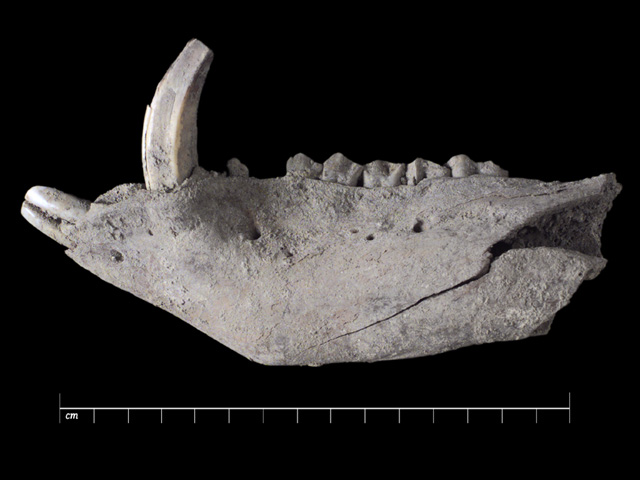 STUDIO PHOTOGRAPHS
STUDIO PHOTOGRAPHSIntroduction | Research | People | Tools
 STUDIO PHOTOGRAPHS
STUDIO PHOTOGRAPHS
MANDIBLE OF SWAIN (TYA 642: 1114)
Type: Left mandible of swain with two front teeth, eye tooth, three premolar teeth and three molar teeth.
Use: Domestic animal, breeded for meat (faunal residue).
Site: Raisio, Ihala, Mulli abode.
Period: Viking Age / Crusade Age / Early Middle Ages.
Dating: 980-1220 A.D.
Photographer: Antti Huittinen.
The earliest conclusive ostheological evidence of swine in Finland can be dated to the 4th century A.D, (in the later Roman period). However, it is fully possible that swine-breeding is a considerably older phenomenon in Finland. In Sweden and Estonia, for example, domestic pigs were known already in the late Stone Age. However, unlike in Finland, the wild-boar is native in these countries. It is possible that the domestic swine were partial descendants of wild stock.
Swine were raised mostly for meat. Also, the long and though bristles from the back of a swain could be used to make brushes. They could also be used when sewing hard-wearing seams and leather foot-wear.
Traditionally the swine were not looked after very well. They were allowed to roam and find their own food. They were slaughtered in the autumn and the meat was preserved, for example, by smoking it.
Other related topics:
Coordinates: Unit 2295.
Introduction | Research | People | Tools